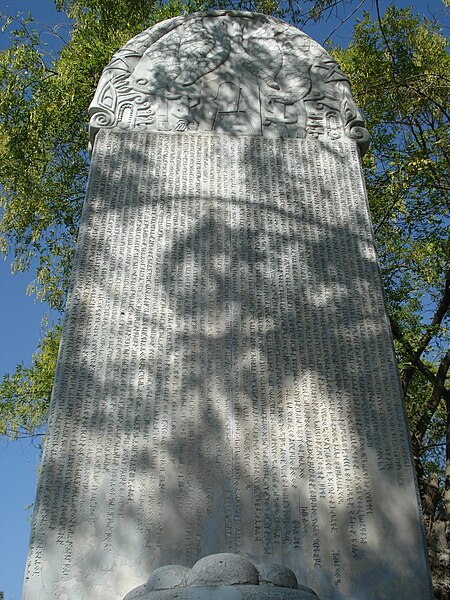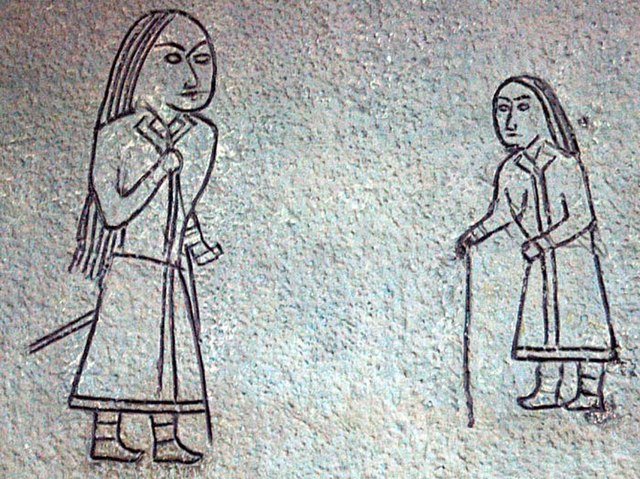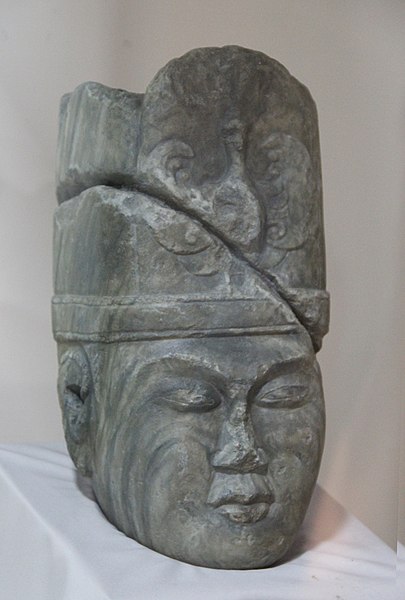The Orkhon inscriptions are two memorial installations erected by the Göktürks written in the Old Turkic alphabet in the early 8th century in the Orkhon Valley in what is modern-day Mongolia. They were erected in honor of two Turkic princes, Kul Tigin and his brother Bilge Khagan.
Kul Tigin Monument of Orkhon Inscriptions – Orkhon Museum, Kharkhorin, Mongolia
Replica of Bilge Khagan's memorial complex in Gazi University, Ankara
The Göktürks, Türüks, Celestial Turks or Blue Turks, alternatively Great Turks or Root Turks were a nomadic confederation of Turkic peoples in medieval Inner Asia. The Göktürks, under the leadership of Bumin Qaghan and his sons, succeeded the Rouran Khaganate as the main power in the region and established the First Turkic Khaganate, one of several nomadic dynasties that would shape the future geolocation, culture, and dominant beliefs of Turkic peoples.
Gökturk petroglyphs from modern Mongolia (6th to 8th century).
A funerary depiction of long haired Türks in the Kazakh steppe. Miho funerary couch, circa 570.
Turkic horseman (Tomb of An Jia, 579 CE).
Bust of Kul Tigin (684–731) found in Khashaat, Arkhangai Province, Orkhon River valley. Located in the National Museum of Mongolia.






